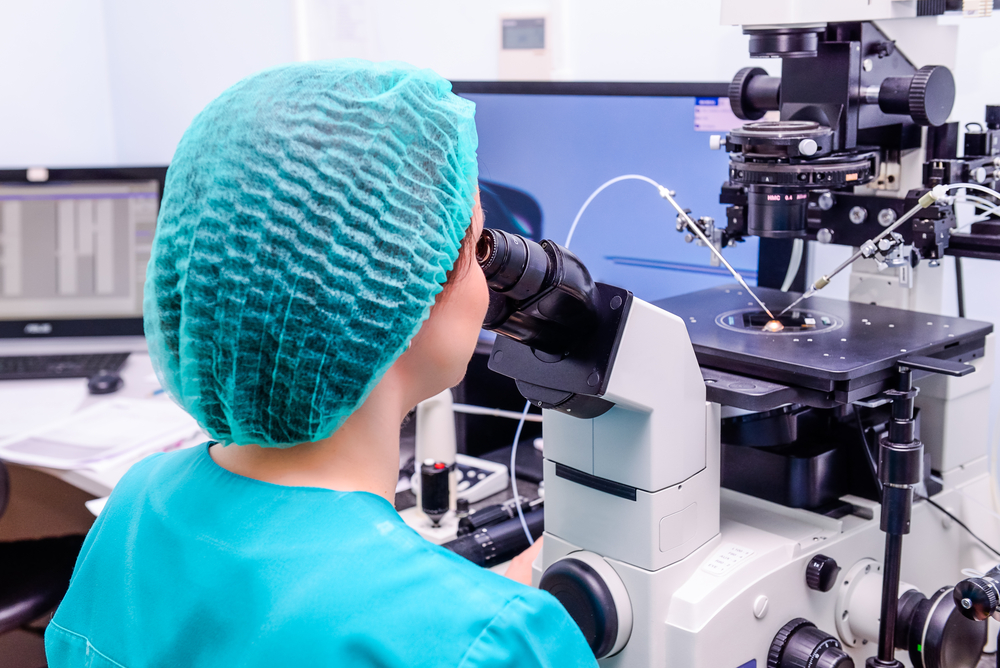Safety of Specimens in the Embryology Laboratory

The most important objective of the embryology team is to provide the best possible environment for patients’ gametes and embryos. In the laboratory, the embryology team ensures the safety of the specimens from three different perspectives: the physical security of the laboratory, the proper functioning of all equipment, and maintaining proper identification of the gametes, embryos, and cells.
In order to ensure that only appropriate staff have access to the Embryology laboratory, all specimens, fresh and frozen, are stored behind physically locked doors. In addition to a mechanical lock, access doors also require an RFID card swipe to release a magnetic lock securing the doors. Every evening once the last staff member leaves the laboratory, the lab’s security alarm is armed until staff are back onsite the following morning. This alarm is monitored overnight by a company that will notify the New York City Police Department and lab management of any attempted unauthorized entry.
One of the most crucial tasks we perform every day in the Embryology laboratory is quality control (QC) of equipment. Each morning a member of the embryology team goes through a multipage checklist of the essential equipment in the laboratory to verify that the equipment is performing as expected. When eggs and embryos are cultured for the one to seven days that they are in the laboratory, they remain in incubators that are set to body temperature and gas concentrations mimicking that of the fallopian tubes. The temperatures and gases are checked with certified external analyzers each morning to confirm proper operation of the incubators. The egg and embryo manipulation workstations are also heated to body temperature. An external thermocouple probe records the actual surface temperature of the workstations daily to confirm the heaters are functioning properly.
The frozen eggs and embryos are kept in dewars that are filled with liquid nitrogen which has a temperature of -196°C. These dewars are QC’d each day to check for any warning signs of compromise to the vacuum system that allows them to maintain their low temperature and low evaporation rates. Our dewar QC involves a physical inspection of all dewars each day, probes constantly monitoring the internal temperature and liquid nitrogen levels, and regular mechanical measurements of the levels of the liquid nitrogen.
In addition to the equipment we use each day, the laboratory environment itself is an essential part of a high-quality egg and embryo culture system. The laboratory has a dedicated HVAC unit that pushes all of the air through multiple UV lights, charcoal filters, and HEPA filters once every minute and a half before returning it back to the laboratory to remove impurities or VOCs that may negatively impact the culture system. All of the equipment that holds eggs or embryos overnight - the incubators, dewars, and the temperature of the lab itself - are monitored 24/7 for any changes. If any piece of equipment were to operate outside of a predefined narrow range, seven senior embryologists would be notified to respond immediately. RMA of New York has comprehensive emergency protocols to handle any type of disaster that may compromise equipment or our culture system. During Hurricane Sandy when NYC shut down, including schools and the NYSE, RMA of New York had appropriate supplies and a functional backup generator to continue operations without any negative impact on eggs or embryos.
Maintaining the identity of all specimens is a critical responsibility of embryology laboratories. At RMA of New York, we utilize a two person witnessing system any time sperm, eggs, embryos, or cells are moved from one device to another. In order to qualify to witness procedures in the laboratory, the witness must have a working knowledge of all devices used in each procedure and sit for a quiz to demonstrate proper understanding. A “time out” is called prior to each procedure where the embryologist performing the procedure, as well as the witness, read each name aloud on all devices and verify that secondary identifiers match. Only after a successful “time out” will any material be moved from one dish, tube, or vial to another. For patients who have PGT as part of their treatment, a two person witness is employed to watch the movement of each embryo and cell sample to ensure that the PGT report will match the actual embryo(s) frozen. The entire process begins at egg retrieval or sperm collection with your embryologist asking you to verify your name and secondary identifier, and a similar process is repeated again at embryo transfer.
The RMA of New York embryology team works hard every day to provide optimal care to all of the gametes and embryos that come into our laboratory. We remain vigilant, even when we are not physically in the laboratory, to ensure that all material remains safe at all times.
